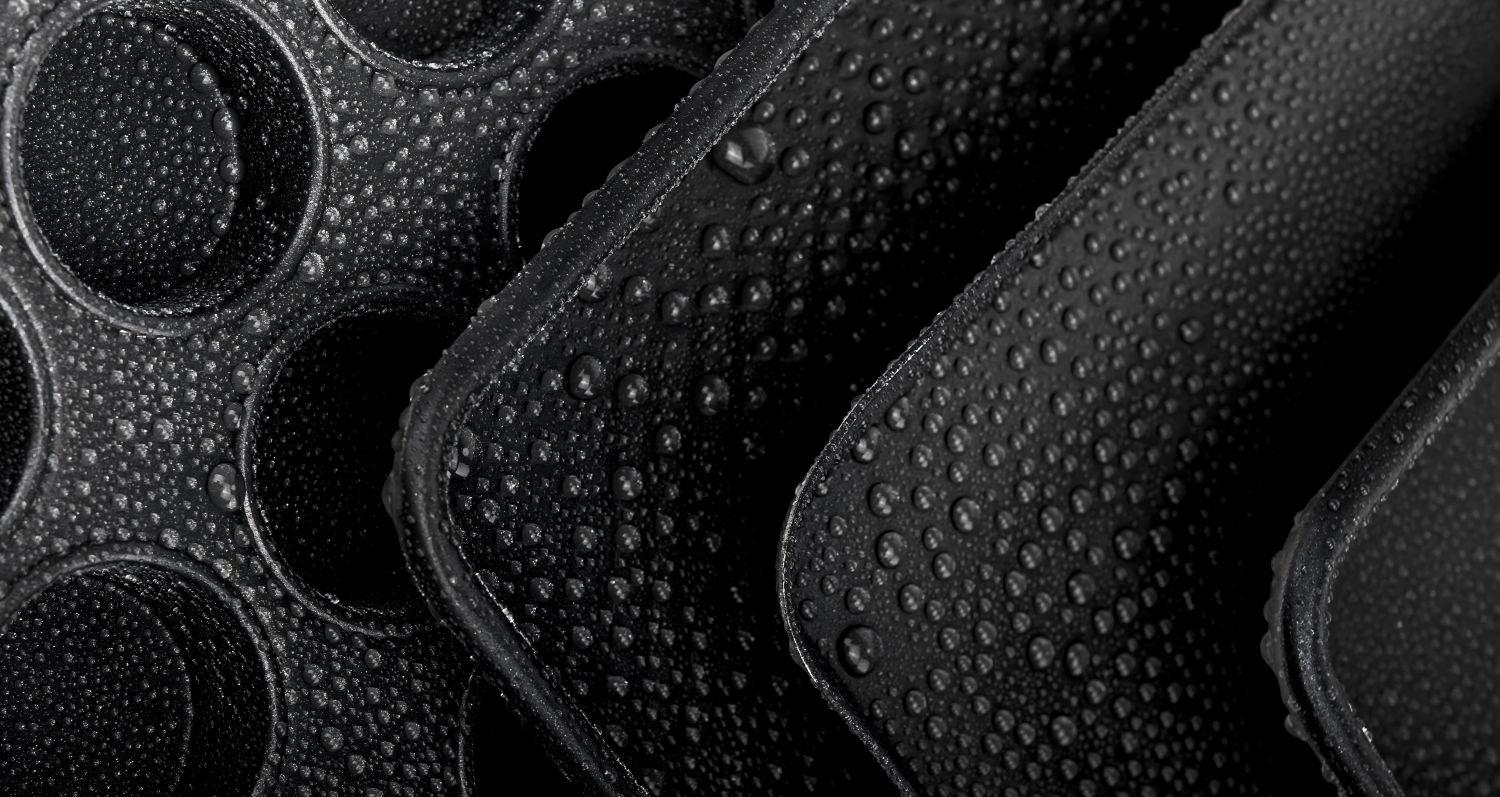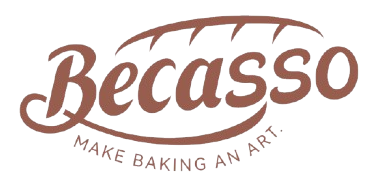
Pendahuluan
Dalam bidang pemanggangan, pilihan loyang dengan lapisan anti lengket yang tepat adalah keputusan yang krusial. Sebagai produsen nampan pemanggang terkemuka untuk penggunaan komersial dan industri, kami memahami pentingnya pilihan ini. Dengan banyaknya pelapis antilengket yang tersedia di pasaran, ini bisa menjadi tugas yang menakutkan bagi pelanggan untuk membuat keputusan yang tepat. Artikel ini bertujuan untuk menjelaskan berbagai lapisan anti lengket untuk baki pemanggang, memberikan panduan tentang penggunaan dan perawatannya, dan menjawab pertanyaan yang sering diajukan untuk membantu pelanggan dalam membuat pilihan yang tepat untuk kebutuhan pemanggangan mereka.
Dalam bidang pemanggangan, pilihan loyang dengan lapisan anti lengket yang tepat adalah keputusan yang krusial. Sebagai produsen nampan pemanggang terkemuka untuk penggunaan komersial dan industri, kami memahami pentingnya pilihan ini. Dengan banyaknya pelapis antilengket yang tersedia di pasaran, ini bisa menjadi tugas yang menakutkan bagi pelanggan untuk membuat keputusan yang tepat. Artikel ini bertujuan untuk menjelaskan berbagai lapisan anti lengket untuk baki pemanggang, memberikan panduan tentang penggunaan dan perawatannya, dan menjawab pertanyaan yang sering diajukan untuk membantu pelanggan dalam membuat pilihan yang tepat untuk kebutuhan pemanggangan mereka.
Daftar Isi
BeralihApa saja pelapis anti lengket yang umum digunakan?
Teks terjemahan: Menjelajahi Opsi
Perusahaan kami menggunakan empat jenis pelapis anti lengket untuk loyang: teflon domestik, teflon impor, pelapis bubuk impor, dan pelapis silikon gula tinggi impor. Dua yang pertama sering disebut sebagai pelapis berbahan dasar cairan, sedangkan yang keempat dikenal sebagai pelapis berminyak. Pelapis bubuk menawarkan kualitas dan daya tahan terbaik, tetapi harganya lebih mahal. Untuk spesifikasi loyang yang sama, loyang yang dilapisi teflon bubuk bisa 2,5 hingga 5 kali lebih mahal daripada loyang berlapis lainnya, tergantung pada faktor-faktor seperti ketebalan lapisan bubuk, bahan yang digunakan, dan proses penyemprotan.
Perusahaan kami menggunakan empat jenis pelapis anti lengket untuk loyang: teflon domestik, teflon impor, pelapis bubuk impor, dan pelapis silikon gula tinggi impor. Dua yang pertama sering disebut sebagai pelapis berbahan dasar cairan, sedangkan yang keempat dikenal sebagai pelapis berminyak. Pelapis bubuk menawarkan kualitas dan daya tahan terbaik, tetapi harganya lebih mahal. Untuk spesifikasi loyang yang sama, loyang yang dilapisi teflon bubuk bisa 2,5 hingga 5 kali lebih mahal daripada loyang berlapis lainnya, tergantung pada faktor-faktor seperti ketebalan lapisan bubuk, bahan yang digunakan, dan proses penyemprotan.
- Lapisan Teflon Domestik: Kami jarang menggunakan teflon domestik. Biasanya digunakan untuk nampan pemanggang dengan pelapis kertas, yang mudah dibersihkan. Ini memiliki sekitar 800 kali anti lengket, yang relatif rendah. Namun, ini adalah pilihan termurah dan hemat biaya untuk klien dengan anggaran terbatas atau mereka yang memiliki resep yang membutuhkan lapisan kertas.
- Lapisan Teflon Impor: Teflon impor dari Amerika Serikat adalah bahan pelapis anti lengket terlaris kami. Tersedia dalam dua jenis: Teflon dua lapis dari American DuPont dan Teflon tiga lapis dari American DuPont. Teflon dua lapis cocok untuk roti dengan kadar gula rendah dan memiliki waktu anti lengket sekitar 1200-1500. Teflon tiga lapis bisa mencapai sekitar 1500-2000 kali. Teflon dua lapis biasanya berwarna hitam karena menyerap panas lebih baik daripada cat cokelat, menghasilkan efek memanggang yang lebih baik dan waktu memanggang yang lebih singkat. Teflon tiga lapis sering kali berwarna keemasan atau sampanye. Untuk pesanan dalam jumlah besar, kami dapat menyesuaikan warna sesuai dengan preferensi pelanggan.
Catatan: Lapisan Teflon berbasis cairan tidak memerlukan injeksi minyak. Namun demikian, sebagian pelanggan mungkin mengalami sedikit lengket pada penggunaan pertama kali, dan ini adalah hal yang normal. Disarankan untuk menyemprotkan sedikit minyak pada loyang Teflon berbahan dasar cairan untuk pertama kali, untuk meningkatkan stabilitas performa anti lengket. - Pelapis Teflon Serbuk: Lapisan teflon bubuk DuPont Amerika cocok untuk memanggang produk makanan dengan tepung murni dan tanpa minyak. Lapisan ini dapat bertahan sekitar 3000 kali anti lengket. Sebagai contoh, KFC membutuhkan wajan hamburger dengan lapisan ini. Harganya mahal tetapi ideal untuk produk yang membutuhkan masa pakai yang lama, seperti kotak roti panggang yang direntangkan satu bagian yang kami ekspor ke Afrika. Lapisan teflon bubuk umumnya digunakan pada bahan baja aluminized karena paduan aluminium memiliki masa pakai yang terbatas dibandingkan dengan lapisan bubuk.
- Lapisan Silikon: Lapisan antilengket silikon impor kami dari Jepang cocok untuk kue bergula tinggi dan memiliki waktu anti lengket sekitar 800-1000 kali. Lapisan ini membuat kue mudah dilepaskan dan mempertahankan bentuknya, tetapi lebih mahal daripada loyang berlapis teflon. Karena sifat adonan kue yang tidak memerlukan fermentasi seperti adonan roti, loyang antilengket silikon memiliki permintaan pasar yang lebih rendah. Waktu anti lengket loyang silikon tergantung pada formula makanan. Perbandingan telur dan tepung 7:3 menghasilkan rasa terbaik. Loyang silikon membutuhkan sedikit semprotan minyak dan pembersihan rutin untuk mencegah terbentuknya lapisan minyak yang mengeras yang dapat menyebabkan makanan lengket.
Apa saja catatan untuk menggunakan loyang dengan lapisan anti lengket?
Subtitle: Panduan Penggunaan
- Loyang anti lengket yang baru dibeli dapat mengalami sedikit perubahan bentuk dalam 90 hari pertama penggunaan, yang merupakan fenomena normal akibat ekspansi dan kontraksi termal logam dan bukan merupakan masalah kualitas produk.
- Loyang antilengket Teflon biasa cocok untuk memanggang roti, sedangkan loyang antilengket silikon untuk makanan bergula tinggi. Kue yang merupakan makanan tinggi gula perlu diolesi dengan minyak pada loyang antilengket setiap kali memanggangnya untuk mendapatkan efek antilengket yang lebih baik dan hasil yang sempurna.
- Loyang kami adalah loyang impor merek internasional, menggunakan peralatan dan teknologi manufaktur yang canggih. Loyang ini sangat tahan suhu, tahan aus, dan anti lengket. Semua produk diuji secara ketat untuk memenuhi jumlah penggunaan yang ditentukan.
Berapa kali loyang anti lengket dapat digunakan?
Subtitle: Pertimbangan Masa Pakai
Jumlah penggunaan loyang antilengket tergantung pada berbagai faktor seperti lingkungan penggunaan, suhu pemanggangan, waktu, dan formula makanan. Untuk loyang antilengket American Dupon 3 lapis Teflon, memanggang selama 15 menit setiap kali biasanya menghasilkan setidaknya 1500/2000 kali antilengket. Waktu memanggang yang lebih lama dapat mengurangi masa pakai. Komposisi bahan makanan yang dipanggang juga memengaruhi masa pakai. Misalnya, adonan Denmark dapat mencapai 1500/2000 kali dalam pemanggangan normal, tetapi kue roti manis dengan kandungan gula tinggi mungkin memiliki umur yang relatif lebih pendek.
Jumlah penggunaan loyang antilengket tergantung pada berbagai faktor seperti lingkungan penggunaan, suhu pemanggangan, waktu, dan formula makanan. Untuk loyang antilengket American Dupon 3 lapis Teflon, memanggang selama 15 menit setiap kali biasanya menghasilkan setidaknya 1500/2000 kali antilengket. Waktu memanggang yang lebih lama dapat mengurangi masa pakai. Komposisi bahan makanan yang dipanggang juga memengaruhi masa pakai. Misalnya, adonan Denmark dapat mencapai 1500/2000 kali dalam pemanggangan normal, tetapi kue roti manis dengan kandungan gula tinggi mungkin memiliki umur yang relatif lebih pendek.
Bagaimana cara merawat loyang anti lengket?
Teks terjemahan: Petunjuk Perawatan
- Bersihkan bagian dalam loyang anti lengket yang baru dibeli dan keringkan dengan api hangat atau kain lembut sebelum digunakan.
- Hindari penggunaan benda logam tajam, bantalan gosok, dan pembersih kimiawi.
- Gunakan kain lembut atau pengikis plastik lembut untuk menghilangkan residu setiap kali selesai memanggang.
- Jangan merendam panci dalam cairan pembersih yang bersifat asam dalam waktu yang lama.
- Bersihkan secara berkala dengan sedikit deterjen netral dalam air hangat dan kain lembut.
- Jangan tinggalkan makanan yang dipanggang atau yang belum dipanggang di dalam baki karena dapat menimbulkan korosi pada logam di bagian bawah lapisan anti lengket.
- Tangani wajan dengan hati-hati untuk menghindari benturan dan gesekan yang dapat merusak lapisan anti lengket.
- Simpan dan susun dengan hati-hati, jaga agar panci tetap kering, dan hindari tempat yang basah.
- Untuk mencegah lapisan anti lengket kehilangan sifat anti lengketnya karena perbedaan suhu tinggi-rendah dalam jangka panjang, ikuti kiat-kiat berikut ini: jaga suhu pemanggangan di bawah 220°C, hindari pemanasan yang tidak merata, jangan membakar dalam keadaan kosong, dan jangan gunakan uap suhu tinggi untuk memasak atau membersihkan dalam waktu yang lama.
Kesimpulan
Kesimpulannya, memahami berbagai jenis pelapis antilengket untuk baki pemanggang dan mengikuti panduan penggunaan dan perawatan yang tepat sangat penting untuk mencapai hasil pemanggangan yang optimal dan memperpanjang masa pakai baki pemanggang Anda. Baik Anda seorang pembuat roti profesional atau penggemar rumahan, membuat pilihan yang tepat tentang pelapis antilengket dapat meningkatkan pengalaman memanggang Anda dan memastikan keberhasilan kreasi panggang Anda.
Kesimpulannya, memahami berbagai jenis pelapis antilengket untuk baki pemanggang dan mengikuti panduan penggunaan dan perawatan yang tepat sangat penting untuk mencapai hasil pemanggangan yang optimal dan memperpanjang masa pakai baki pemanggang Anda. Baik Anda seorang pembuat roti profesional atau penggemar rumahan, membuat pilihan yang tepat tentang pelapis antilengket dapat meningkatkan pengalaman memanggang Anda dan memastikan keberhasilan kreasi panggang Anda.
